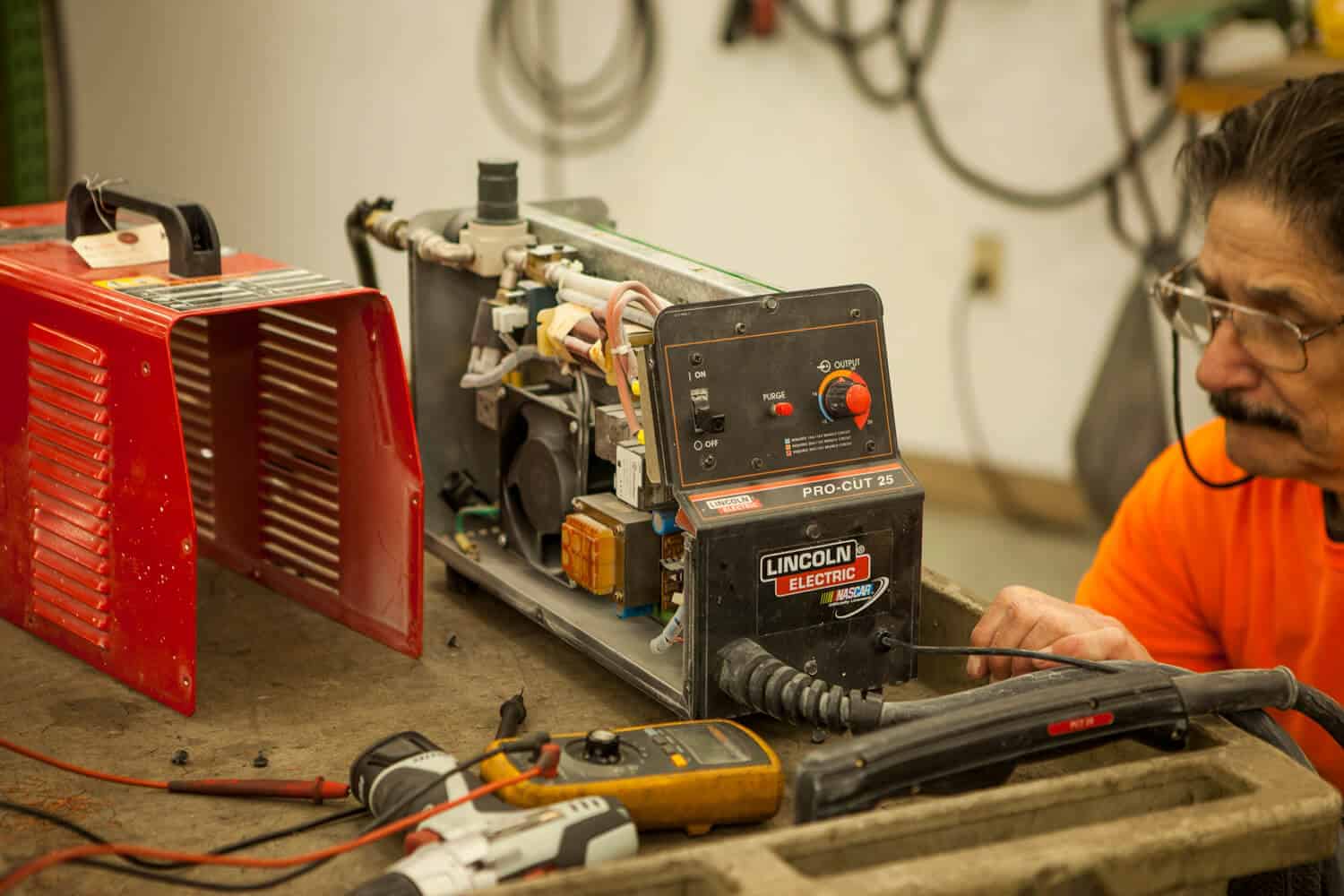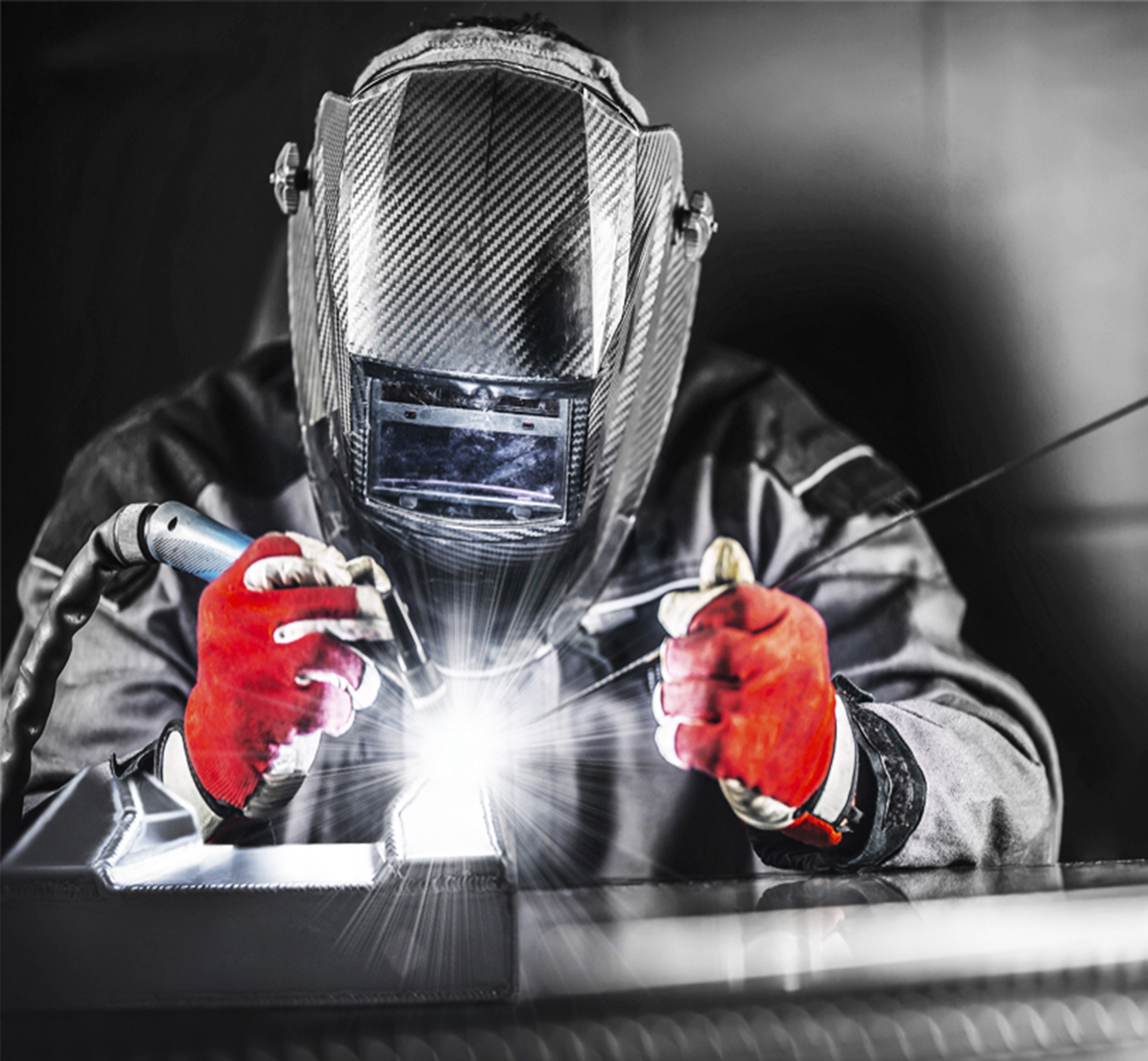Causes of weld porosity and how Belgrade Welding addresses them
Wiki Article
Usual Welding Repair Issues and How to Address Them Effectively
Welding repair work often come across a range of issues that can threaten the integrity of the end product. Common problems consist of insufficient penetration, porosity, and misalignment, among others. Each flaw provides one-of-a-kind difficulties that call for specific approaches for resolution. Comprehending these issues is vital for welders intending to improve their skills and results. This conversation will check out these common welding repair problems and efficient techniques to resolve them.Inadequate Penetration
Poor infiltration takes place when the weld metal falls short to totally fuse with the base material, leading to weak joints and prospective architectural failings. This problem commonly stems from inadequate warmth input, inaccurate electrode angle, or improper welding speed. Welders may run into inadequate penetration as a result of a miscalculation of the essential criteria for a details material thickness or type. Furthermore, contamination on the base material's surface area can hinder efficient bonding, intensifying the issue. To address poor infiltration, welders ought to ensure suitable settings on their tools and maintain a tidy work surface. Normal evaluation of welds is advised to recognize any shortages early, permitting prompt improvements and the prevention of jeopardized structural stability in bonded settings up.Porosity
Porosity is a common defect in bonded joints that shows up as little gas bubbles entraped within the weld steel. This defect can compromise the honesty of the weld, resulting in minimized toughness and possible failing under tension. Montana Mobile Welding and Repair Belgrade. Porosity normally occurs from contamination, dampness, or inappropriate welding techniques, which enable gases to leave into the molten weld pool. To attend to porosity, welders need to guarantee correct surface preparation, preserve a tidy workplace, and utilize ideal welding specifications. In addition, selecting the appropriate filler product and protecting gas can minimize gas entrapment. Regular evaluation and screening of welds can aid identify porosity early, ensuring prompt restorative activities are taken, therefore preserving the high quality and integrity of the bonded structureImbalance
Misalignment in welding can develop from different aspects, including inappropriate configuration and thermal development. Comprehending the origin is necessary for efficient resolution. Numerous correction techniques are readily available to realign elements and ensure structural stability.Reasons for Imbalance
Welding misalignment typically originates from a selection of underlying problems that can compromise architectural honesty. One key cause is incorrect fit-up of components prior to welding, which can result in voids and unequal surfaces. Variations in thermal growth throughout the welding procedure can likewise result in distortion, especially if the materials being signed up with have various coefficients of development. Furthermore, poor fixturing and securing may stop working to hold parts firmly in position, leading to activity during welding. Badly maintained devices, including welding machines and devices, might present variances in the weld bead, additional adding to misalignment. Driver error, stemming from inadequate training or experience, can also play a substantial function in developing misaligned welds.Improvement Techniques Offered
Resolving imbalance properly calls for a combination of corrective techniques tailored to the specific issues handy. One common technique is the use of jigs or fixtures to hold components in the correct position during welding, making certain constant alignment. Furthermore, preheating the materials can help in reducing distortion and boost fit-up. For considerable misalignment, mechanical adjustment strategies, such as utilizing hydraulic jacks or clamps, can be employed to correct the setting before welding. Post-weld heat treatment may additionally be needed to soothe anxieties brought on by misalignment. Lastly, mindful inspection and modification during the setup stage can protect against imbalance issues from coming to be substantial troubles, promoting a smoother welding procedure and improving overall structural honesty.Distortion
Distortion is an usual challenge in welding that can occur from various aspects, consisting of irregular cooling and heating. Understanding the causes of distortion is crucial for carrying out efficient prevention methods. Addressing this problem not just improves architectural stability but likewise enhances the overall high quality of the weld.Sources of Distortion
When based on the intense warmth of welding, materials often undergo changes that can lead to distortion. This sensation largely arises from thermal growth and tightening throughout the welding procedure. As the weld area warms up, the material expands; upon air conditioning, it contracts, which can develop interior tensions. Furthermore, irregular heating across a work surface can intensify these stress and anxieties, leading to bending or bending. The kind of product likewise plays a considerable role; metals with varying thermal conductivity and coefficients of development might respond in different ways, resulting in unpredictable distortions. Moreover, inadequate joint design and inadequate fixturing can add to misalignment during welding, increasing the possibility of distortion. Understanding these causes is important for reliable welding repair and prevention techniques.Prevention Techniques
Effective prevention strategies for distortion during welding concentrate on regulating warm input and making sure correct joint layout. Preserving a constant warmth input aids to lessen thermal development and tightening, which can result in distortion. Utilizing methods such as pre-heating the workpiece can also lower the temperature slope, promoting uniform heating. In addition, choosing suitable joint designs, such as T-joints or lap joints, can boost security and minimize stress focus. Applying correct fixturing to protect the work surfaces in position even more aids in preserving alignment throughout the welding process. Staggered welding sequences can distribute warmth extra equally, stopping localized distortion. By applying these approaches, welders can significantly reduce the chance of distortion and enhance the general high quality of their welds.Cracking
Splitting is a common issue encountered in welding repair work, often resulting from different aspects such as inappropriate cooling prices, material choice, or inadequate joint preparation. The event of splits can significantly compromise the honesty of the weld, causing prospective failings throughout operation. To resolve this issue, welders should initially assess the origin, making certain that materials are suitable and properly selected for the details application. Furthermore, controlling the cooling rate throughout the welding process is essential; fast air conditioning can generate stress and bring about breaking. Proper joint layout and prep work also add to minimizing the risk. Executing these methods can boost weld high quality and longevity, inevitably minimizing the probability of fracturing in finished weldments.
Incomplete Combination
A substantial concern in welding repair services is incomplete blend, which occurs when the weld steel does not appropriately bond with the base product or previous weld passes - Montana Mobile Welding and Repair. This flaw can cause weaknesses in the joint, possibly compromising the stability of the welded framework. Variables contributing to insufficient blend consist of insufficient heat input, improper welding technique, and contamination of the surfaces being joined. To address this concern effectively, welders must assure proper pre-weld cleaning and surface area prep work, in addition to adjust their welding specifications to achieve adequate penetration and combination. Routine inspection throughout the welding process can likewise assist identify insufficient fusion early, permitting prompt restorative actions to enhance the general top quality of the weldOverheating
While welding repair services can improve structural stability, overheating presents a significant difficulty that can bring about product destruction. Too much heat throughout welding can alter the mechanical residential or commercial properties of steels, leading to reduced stamina, enhanced brittleness, and bending. This sensation is particularly vital in high-stress applications where architectural reliability is paramount. Determining overheating can involve visual evaluations for discoloration or distortion, as well as checking temperature level during the welding procedure. To alleviate the threats connected with overheating, welders ought to utilize suitable strategies, such as controlling warmth input, adjusting traveling rate, and using ideal filler products. In addition, implementing pre- and post-weld warmth therapies can assist recover material homes and boost the overall high quality of the repair, guaranteeing long-term efficiency and safety and security.Frequently Asked Inquiries
What Are the Typical Indications of a Welding Problem?

How Can I Evaluate My Welds for Top quality?
To examine welds for top quality, one can use aesthetic examinations, ultrasonic screening, and radiographic techniques. Each technique guarantees structural stability, recognizes defects, and validates adherence to defined criteria, eventually boosting the dependability of the welded joints.What Security Precautions Should I Take While Welding?
When welding, one ought to prioritize safety by using appropriate individual safety tools, guaranteeing correct ventilation, securing flammable products away, keeping a clean work area, and recognizing surroundings to protect against accidents and injuries.Can I Fix a Weld Without Remodeling the Entire Joint?
Fixing a weld without remodeling the whole joint is feasible, relying on the damages (Belgrade). Techniques such as grinding, including filler material, or using a welding process can efficiently attend to details defects while preserving the bordering frameworkWhat Devices Are Vital for Effective Welding Repair Works?
Vital tools for effective welding repair services consist of a welding machine, cord brush, mill, protective equipment, clamps, and filler products. Each tool plays an important role in making certain top quality and safety and security throughout the repair service procedure. Porosity typically occurs from contamination, dampness, or improper welding strategies, which enable gases to leave into the molten weld swimming pool. Inadequately kept devices, including welding equipments and tools, might present disparities in the weld bead, further adding to imbalance. When subjected to the intense heat of welding, materials usually undergo modifications that can lead to distortion. Cracking website is an usual issue encountered in welding repair services, frequently resulting from numerous aspects such as incorrect air conditioning rates, material selection, or poor joint preparation. A considerable concern in welding fixings is incomplete fusion, which occurs when the weld steel does not properly bond with the base product or previous weld passes.Report this wiki page